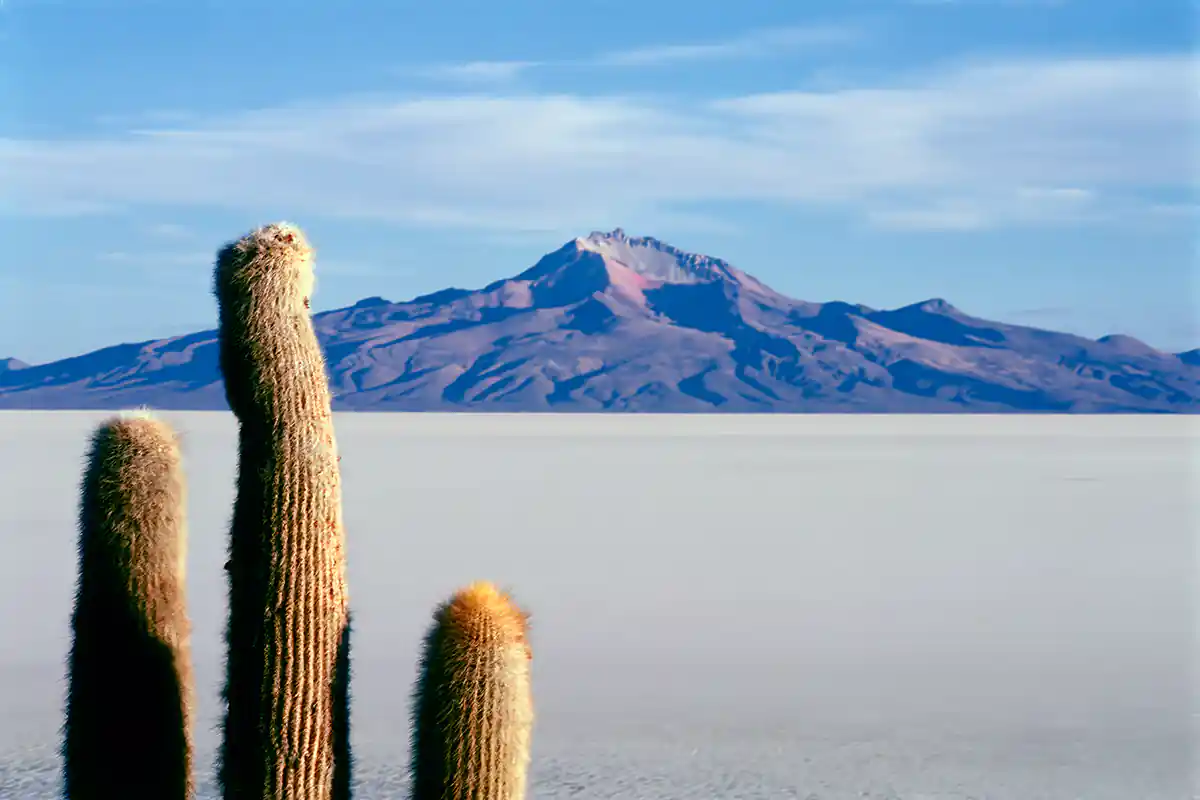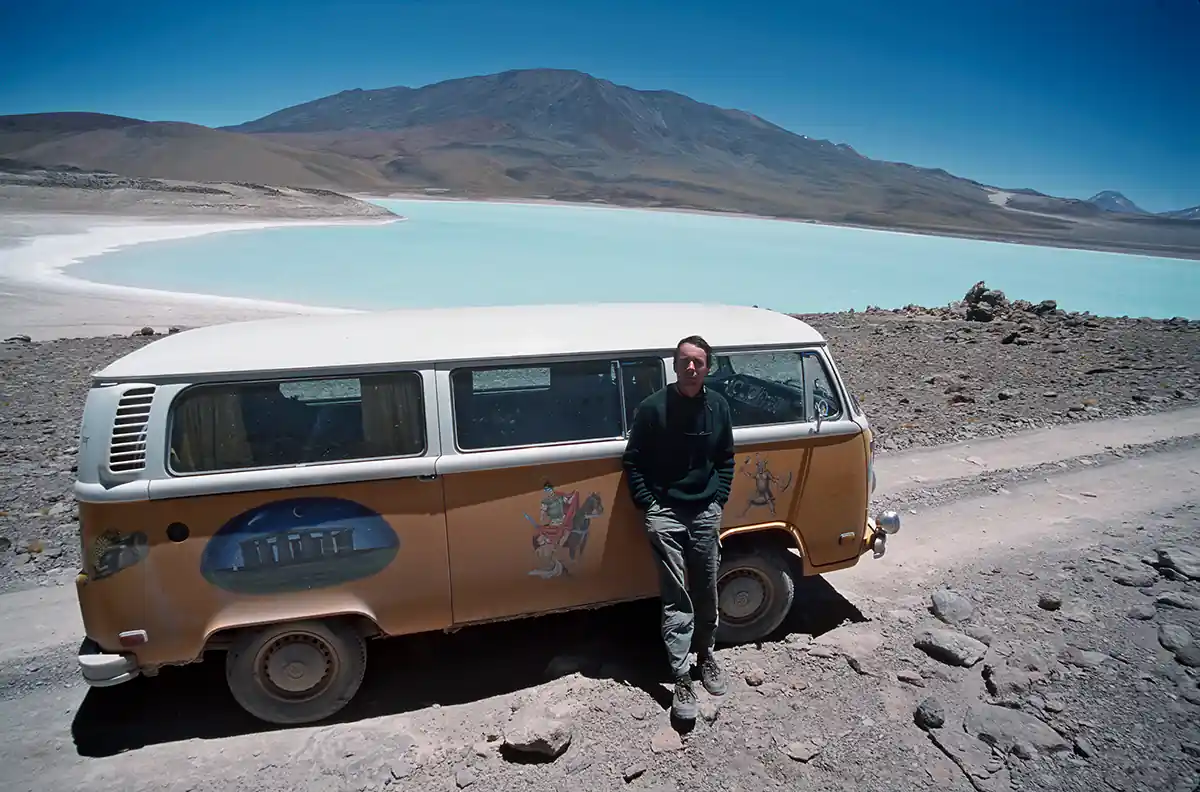Salar de Uyuni and Mt. Tunupa, Bolivia
Many times in the long course of my travels, I have been asked the following questions: What is your favorite sacred place, or where is the most beautiful place you have ever been? Nearly always, I respond that I have ten or twenty favorites but that it is impossible to say what the most lovely place I have seen is. Beauty is found in many forms when one travels the earth as widely as I have been able to do. There are soaring mountains colored crimson by the setting sun, graceful sand dunes following one another as far as the eye can see, and lakes set in surroundings so sublimely beautiful that heavenly is the only word to describe them. How could you possibly choose from this palette of perfection?
And yet, if I were to select a place with a beauty almost beyond compare, I might choose the great salt lake of southern Bolivia. Modern-day maps mostly name the lake Salar de Uyuni, for near its south-eastern shore is the small town of that name. But question the local indigenous folk whose ancestors have lived around the lake for thousands of years. You will learn its name is linked not to Uyuni but to the sacred mountain of Tunupa, which rises like a floating mirage from its northern shores.
The Salar is only an actual lake, with water, for a few weeks or months each year (sometimes there is no water for many years). It is not water that makes it a lake but a sea of salt. Slightly over twelve thousand square kilometers in size and perched high in the Altiplano at 3720 meters, Salar de Tunupa, is a vast expanse of the whitest white I have seen anywhere on the earth. Whiter even than the extraordinary gypsum sand dunes of southern New Mexico, another sacred place shown on this website.
There are no roads across the salt flats, only seasonal tracks left by a few jeeps that take travelers to view the otherworldly place. The silence is complete; no sound will you hear except the crush of salt crystals beneath your feet. Shimmering mirages ring the horizon in every direction while purple mountains loom in the misty distance. In the middle, piercing the blazing white, is the small island of Isla Inkahuasi; its sharp crags of volcanic rock are as black as the darkest ink. The only evidence of island life is a profusion of tall, furry green cacti and a few dozen shy rabbits with long, cartoon-like ears. I spent three days on this island and its surrounding sea of pristine salt, and it was an experience of spiritual ecstasy for me.
The combination of blinding white land, cobalt blue skies, and golden sun touched me in a way few other places have. Simply by being in this place, one finds inner peace. No effort must be made to reach this state, for the environment gives it to you. Travelers I met who had been here remarked that even after weeks away, they still felt the power of its presence.

Martin Gray is a cultural anthropologist, writer and photographer specializing in the study of pilgrimage traditions and sacred sites around the world. During a 40 year period he has visited more than 2000 pilgrimage places in 160 countries. The World Pilgrimage Guide at sacredsites.com is the most comprehensive source of information on this subject.


